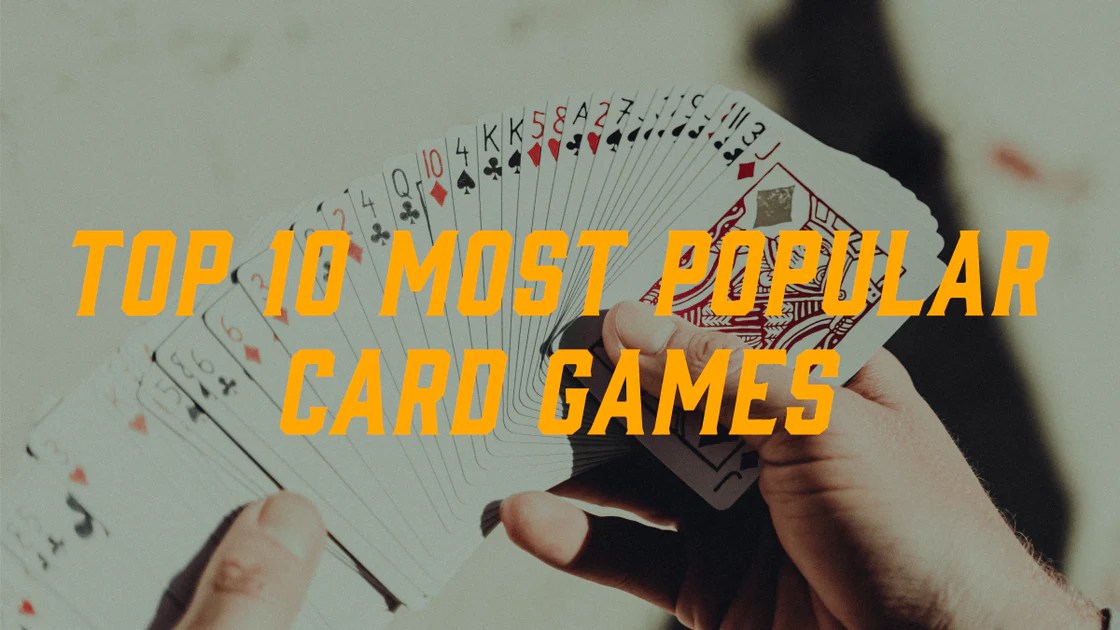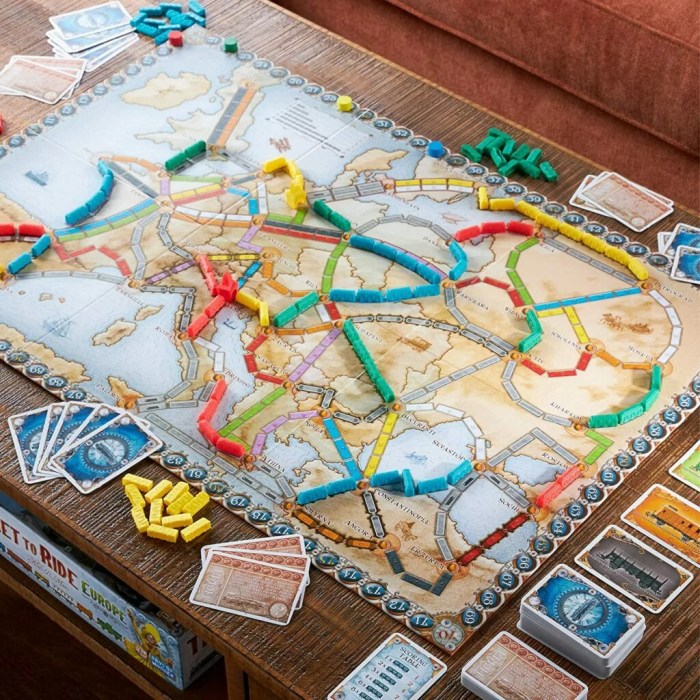
Welcome to the enchanting universe of Popular card games where the stakes are high, the bluffs are bold, and the laughter is contagious! From ancient taverns to modern living rooms, card games have played a pivotal role in bringing people together, sparking friendships, and igniting rivalries with a simple shuffle of the deck. As we embark on this card-filled adventure, prepare to discover the fascinating history, unique characteristics, and cultural significance that make these games beloved across the globe.
We’ll explore the colorful variety of card games, diving into their fun-filled rules, the age-old debate of strategy versus luck, and the ingenious themes that transport players to realms of fantasy, history, or sports. Buckle up, because it’s going to be a wild ride through the world of cards!
Overview of Popular Card Games
Card games have a rich and varied history that spans cultures and continents, evolving from simple pastimes to complex social rituals. The earliest records of card games can be traced back to 9th century China, where they were believed to have originated from dominoes, spreading through trade routes to Persia, India, and eventually Europe. By the 15th century, playing cards had made their way into Europe, transforming into the designs and suits we recognize today.
As they traveled, they adapted to the cultural nuances of each region, often embodying local folklore and traditions, which is partly why they remain a beloved form of entertainment across the globe.The significance of card games transcends mere recreation; they often serve as a powerful social glue in various societies. In many cultures, card games are a staple during social gatherings, holidays, and family events.
For instance, in India, the game of Teen Patti is not just about cards but also about bonding over friendly rivalries and laughter. Similarly, in Western cultures, games like Poker and Bridge come with a hefty dose of strategy and bluffing, creating an atmosphere that can turn a casual evening into a high-stakes affair. This cultural embedding highlights the role of card games in bringing people together, fostering connections, and even helping in conflict resolution.
Characteristics of Widely Played Card Games
Certain card games have captured the hearts of players around the world due to their unique characteristics that blend strategy, chance, and social interaction. The following traits contribute to their widespread popularity:
- Simplicity of Rules: Many successful card games possess straightforward rules that allow newcomers to jump right in. For example, the rules of Uno can be learned in minutes, making it accessible for players of all ages.
- Strategic Depth: While easy to learn, games like Poker and Bridge offer layers of strategy that can take a lifetime to master. The balance of luck and skill keeps players coming back for more.
- Social Interaction: Card games often involve multiple players, which fosters communication and camaraderie. Games like Hearts and Spades encourage teamwork and alliances, enhancing social bonds.
- Variability: Many card games have numerous variations that allow for fresh experiences. For instance, Rummy has countless adaptations, each offering a unique twist on the original game.
- Accessibility: Card games typically require minimal equipment—a deck of cards is often all that’s needed. This makes them easy to play anywhere, from a cozy living room to a bustling coffee shop.
“Card games are not just games; they are a universal language that transcends borders and cultures.”
In essence, the enduring appeal of card games lies in their ability to entertain, challenge, and connect people, demonstrating that these simple pieces of cardboard can have a profound impact on social dynamics across the globe.
Types of Popular Card Games

Card games have long been a source of entertainment and competition, bringing friends and family together in exciting and sometimes fiercely contested encounters. With a deck of cards in hand, players can embark on adventures ranging from strategic battles to whimsical escapades. Let’s dive into the colorful world of popular card games, exploring their unique rules, strategic depths, and thematic wonders that keep players coming back for more.
Examples of Popular Card Games and Their Unique Rules
Card games can be as varied as the players who enjoy them. Below are some popular games, each with its signature twist:
- Poker: A game of bluffing and strategy where players bet based on the strength of their hands. Different variants like Texas Hold’em introduce unique rules about community cards and betting rounds.
- Bridge: A partnership game that requires communication and strategy, where players bid on the number of tricks they predict they can take, with a focus on the interplay between partners.
- Uno: A family favorite that combines luck and strategy, where players match colors and numbers, using special cards to disrupt opponents’ plans. “Uno!” is the last word you want to hear right before you lose!
- Magic: The Gathering: A collectible card game where players duel using decks they customize. Each card has unique abilities, and players must build strategies around synergies and counterplays.
- Solitaire: The lone wolf of card games, this one-player game involves moving cards in a specific order to build up foundation piles while clearing the tableau. Who knew beating yourself could be so much fun?
Strategic Versus Luck-Based Card Games
Card games can generally be divided into strategic games, where skill and planning reign supreme, and luck-based games, where the roll of the dice—or flip of the cards—could change everything. Understanding these dynamics can enhance the gaming experience.
- Strategic Games: Games like Chess or Magic: The Gathering require forethought and planning. Players must anticipate opponents’ moves and devise complex strategies to outsmart them.
- Luck-Based Games: Games such as War or Go Fish rely heavily on chance. The outcome can hinge on which cards are drawn, often leading to unpredictable results that can spark both joy and frustration.
“In poker, it’s not just the cards you’re dealt, but how you play them.”
Themes Found in Card Games
Card games often transport players to fantastical realms, historical epochs, or intense sports arenas through their themes. The diversity in themes is a testament to the creativity in game design.
- Fantasy: Games like Magic: The Gathering and Gloomhaven offer immersive experiences in magical worlds filled with mythical creatures and grand adventures.
- History: Titles such as 7 Wonders involve players building civilizations throughout history, learning about ancient cultures while striving for victory.
- Sports: Games like Top Trumps can pit players against one another with stats from various sports, allowing fans to engage with their favorite athletes in a competitive format.
Each card game, with its unique rules and themes, provides a different flavor of fun, waiting for players to shuffle, deal, and enjoy the experience. So grab your deck, find some friends, and let the games begin!
Board Games vs. Card Games

Board games and card games are two titans of table-top entertainment, each boasting their own unique flair and finesse. While both categories engage players in delightful duels of strategy and chance, they also possess distinct characteristics that set them apart—like two siblings who share the same parents but have wildly different personalities.At their core, both board games and card games aim to foster interaction, challenge players, and create memorable experiences.
However, their methods of doing so differ greatly. Board games often feature a physical board, game pieces, and intricate pathways to navigate, while card games rely on decks and hands of cards that can turn the tides with each draw. Let’s delve into these similarities and differences further.
Popular Board Games Incorporating Card Mechanics
Many board games have embraced the charm of cards, creating a delightful blend that captures the best of both worlds. Here’s a selection of standout games where cards play a pivotal role:
- Magic: The Gathering Arena
-A digital adaptation of the classic card game, where players duel using decks they craft from a staggering pool of cards. - Gloomhaven
-This epic adventure game utilizes cards to dictate player abilities and actions, all while players explore a rich narrative. - Ticket to Ride
-Train your brain while drawing cards to claim routes across stunning maps, making this a strategic gem. - Race for the Galaxy
-This sci-fi themed game cleverly combines board and card mechanics to build galactic empires. - Arkham Horror
-A cooperative board game that draws on card mechanics to immerse players in a Lovecraftian horror experience.
Comparison of Gameplay Styles, Complexity, and Player Interaction
Understanding the dynamics between card games and board games can help players choose their ideal game night experience. Below is a table that compares these two popular forms of play along key dimensions:
| Aspect | Card Games | Board Games |
|---|---|---|
| Gameplay Style | Often quick and fluid, focusing on hand management and tactical decision-making. | More structured with longer turns, featuring exploration, movement, and territorial control. |
| Complexity | Ranges from simple to complex; many games are easy to learn but hard to master. | Tends to include multi-layered rules and mechanics, often requiring significant learning time. |
| Player Interaction | Highly interactive, often directly affecting opponents’ hands and strategies. | Varies significantly; can include direct conflict or more indirect competition based on game design. |
In the world of games, the only thing as important as your strategy is knowing when to throw your cards (or game pieces) up in frustration!
Epilogue
As our journey through Popular card games comes to a dramatic close, we hope you’ve gained both knowledge and inspiration to shuffle those cards and join in the fun! Whether you prefer a game of strategy or a dash of luck, the world of card games offers endless entertainment and camaraderie. So, gather your friends, take out that deck, and may the odds be ever in your favor—unless, of course, you’re bluffing!
User Queries
What are some classic examples of popular card games?
Some classic examples include Poker, Bridge, Blackjack, and Rummy, each with its own unique set of rules and strategies!
Are card games purely luck-based?
Nope! While luck plays a role, many card games require skill, strategy, and sometimes a touch of deception.
Can card games be played online?
<pAbsolutely! Many popular card games have online versions, allowing players to enjoy their favorite games from anywhere in the world.
What’s the appeal of card games in social settings?
Card games foster social interaction, allowing players to bond over friendly competition, laughter, and sometimes a little friendly trash talk!
How do you choose a card game for a gathering?
Consider the group’s preferences, the number of players, and the time you have available. Choose something fun, engaging, and suitable for the crowd!



